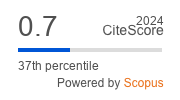Hypomagnesemia in Iraqi Diabetic Patients and Healthy Controls: An Exploratory study
Keywords:
Hypomagnesemia, Albumin, Diabetes, Iraqi.Abstract
Background: Diabetes mellitus has been suggested
to be the most common metabolic disorder
associated with magnesium deficiency, and because
available data suggest that adverse outcomes are
associated with hypomagnesemia, it is prudent that
routine surveillance for hypomagnesemia be done
and the condition be treated whenever possible.
Aim of the study:To explore the serum Mg
concentrations of diabetic patients and healthy
controls in our locality.
Mehtods: One hundred and forty four diabetic
patients (22 with type I and 122 with type II diabetes
mellitus) recruited from the outpatient diabetes clinic
at the Specialized Center For Endocrine DiseasesBaghdad (62 patients), National Diabetes Center-Al
Mustansiria University (20 patients), and from
private endocrinologic practice clinics in Baghdad
(62 patients), during the period from 1st October
2005 to 30th April 2006. Ninety non-diabetic healthy
controls matched for age and sex were participated in
this study. Exclusion criteria for both groups
included diarrhea and loop diuretics. None were
taking Mg supplements. Level of Mg and Albumin
were determined spectrophotometerically in the
same serum samples.
Results: Mean serum Mg concentrations of the
diabetics was significantly lower than in controls
(p<0.001). Serum albumin was not a significant
predictor of serum Mg neither among diabetic
patients (r = 0.005) nor control subjects (r = 0.139).
In 88.9% of the diabetic patients and 11.1% of the
control subjects serum Mg concentrations were
below the normal reference range of 0.70 mmol/L.
The prevalence is increased when hypomagnesemia
is defined by a reference limit of 0.75 mmol/L
(98.6% and 28.9 % for diabetics and controls,
respectively), a further higher prevalence among
controls (91.1 %) was noted when 0.80 mmol/L is
adopted as the lower normal limit. All diabetics
(100%) and controls (100%) were identified as
hypomagnesemic with a lower reference limit of
0.90 mmol/L.
Conclusion: The tremendous hot climate of ours,
can be suggested as an influential cause for increased
Mg losses, and may provide a coherent explanation
for the exceedingly high prevalence of
hypomagnesemia observed in diabetic and control
subjects participated in this study. Which therefore
may suggest an inevitable requirement for
magnesium supplementation to avert
hypomagnesemia, not only among diabetics, but as
well for controls, particularly through the hot
summer episode













